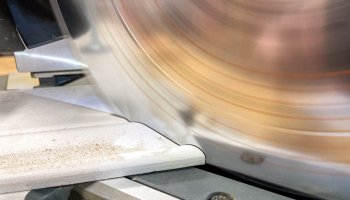
Many different types of water heaters currently exist for consumers looking to either replace or install one. Nothing, however, has generated as much excitement in the U.S. as tankless water heaters. I say “in the U.S.” because tankless systems have pretty much been the norm overseas. In fact, in places like Japan and much of Europe, tankless is the norm. This mostly has to do with how much less space they take up. This consideration weighs heavily overseas where people don’t have as much living space. So how do tankless water heaters work to provide on-demand water for a single sink or an entire home?
What is a Tankless Water Heater?
These water heating systems don’t utilize a tank to store heated water. They provide on-demand hot water to either a whole house, a local tap, or even an appliance. Tankless water heaters might cost, on average, about twice as much as conventional water heaters. However, government tax credits and local utility company rebates could help make them a bit more affordable. Factor in how much more efficiently they operate over conventional tank-based systems, and you might recoup your money within a few years.
How Do Gas Tankless Water Heaters Work?
Tankless water heaters use a heating element (called a heat exchanger). This lets them heat water instantly as it flows through a network of twists and turns. Unlike a conventional water heater, there’s no standing water stored in a tank. That means they don’t lose heat over time (standby loss) as the hot water sits waiting to be used.
This makes tankless water heaters more energy-efficient since the water is only heated when it’s needed. The “flow controlled” system only heats when the tap(s) request hot water. At that point, it produces heat and pulls it through the system.
When water isn’t being used it isn’t being heated. The device is essentially off.
Gas systems typically utilize natural gas fed from a city or county line to heat the water as it passes through the heat exchanger. Alternatively, you can use propane from a local tank provided the hardware supports it. Here is what a gas water heater looks like on the inside:

Electric water heaters use an electric heating system to heat water. These systems often require several high-current circuits to successfully heat water for an entire home. Some of these remind me of the inside of a fancy coffee maker—but with even more components, volume, and technology.

Whole House or Localized Heating?
As you can see, gas and electric tankless water heaters work very differently. Since gas tankless water heaters use natural gas or liquid propane, you can more easily retrofit them when needed—provided the home has access to a supply of gas. Both gas and electric water tankless heaters can function as whole-house solutions or as a smaller “point-of-use” system. Smaller single-use tankless water heaters heat water for just a single room, tap, or appliance.
These larger and smaller systems essentially work in the same way. Cold water comes in and gets heated by the heat exchanger as it passes through. It then travels out the hot tap into your home. The system turns on automatically when the flow rate rises above a set threshold. Typically, anything more than a trickle on the hot water line activates the heater.
There has been some discussion that tankless systems don’t actually provide instantaneous heat since the system has to heat the water on the fly and “push out” the cold water from the pipes before it reaches the tap. That seems like a reasonable argument—except for the part where a tank-based water heater has to do the same thing.. However, it also has to keep the water hot in the tank whether you are using it or not.
In truth, people who complain about how long it takes the hot water to reach the tap have forgotten that the conventional water heater had nearly the same issues. With a tankless system, you can do one better. You can bypass the hot water line and insert a “point-of-use” model at a location such as a sink. This supplies instant hot water without having to pull from a centralized location much further away.
Reasons NOT to Get a Tankless Water Heater
We love the idea of a tankless water heater. However, if your home isn’t designed for it—it may not be the best choice. For example, perhaps you have a larger home with an aging electric water heater. If you replace that tank with a tankless water heater, you still have to get the water all the way across the home to the furthest tap. Many hot water heaters cannot support a hot water recirculation system. That means you could be running that hot water for a while before it actually gets where you need it.
You also want to take into account your electrical requirements for a whole home electric tankless water heater. Larger homes may need three 60-amp breakers to supply power to the tankless water heater. That’s a lot of added electrical infrastructure if you don’t have the ready space in the panel to support it!
With gas tankless water heaters, the decision seems simpler. These really tend to save money over an electric tank system in most scenarios. You just need to make sure you have a supply of gas.
Still, the best water heater might end up being a hybrid model from A. O. Smith or a similar company that operates much like a traditional electric water heater, but with 3-4X the efficiency.
How Do Electric vs Gas Tankless Water Heaters Work?
The differences between how gas and electric tankless water heaters work are significant. At first blush, they look very similar (especially in size and from the outside). Quickly, it becomes readily apparent that these products heat the water in very different manners. While gas units require ventilation for the emissions they produce, electric tankless water heaters do not.
Gas-based models need to ignite in order to heat the water. This typically comes by means of an electrical (110V) circuit. Somne newer models use waterflow to “power” the electronics needed for ignition. This is actually very cool, and means that no electricity is needed to operate these gas models. Waterflow activation also means you don’t lose your hot water when the power goes out. This is critical since, unlike a tank-based system, if the system shuts down the hot water disappears almost instantly.
Electric models do not run off standard 110V or even 220V lines. Instead, they require a series of circuits rated at 30-60 amps or more. Unless you’re doing new construction, you may have difficulty retrofitting an existing home to use an electric tankless system. Just to give you an idea, you’ll need #8 wiring for a 50A circuit, and #6 wiring for a 60A circuit. A typical electric whole home tankless water heater requires two or even three 50A or 60A circuits and at least 200 amp service to the home.
Because they aren’t as efficient, and are more difficult to retrofit, we don’t recommend the electric type as much for existing homes. If you can meet the requirements, however, and don’t have gas service you may want to consider taking advantage of the convenience and potential cost savings.
What Kind of Tankless Water Heater Do I Need?
Aside from the decision of gas vs electric tankless hot water heaters, you’ll need to evaluate something called “flow rate”. In order to meet the needs of your household, you need to supply enough heated water. That means getting enough hot water to each tap on demand. For those looking to simply supply a “point-of-use” faucet you can buy a small electric model and place it underneath the sink. This bypasses the normal hot water inlet. For a whole home application, however, you’ll need to do some math.
Doing the Math to Understand What Size Tankless Water Heater You Need
Here are some basic guidelines for running your calculations, but you may need to do some testing or research to get the exact numbers for your application:
- Bathroom faucet
Low-flow faucets use anywhere from 0.5-1.5 GPM (Gallons Per Minute). Most fixtures installed after 1992 are set at 2.2 GPM. Faucets that pre-date 1992 can have anywhere between 3-5 GPM. - Kitchen faucet
Standard post-1992 faucets are set to 2.2 GPM. Faucets that pre-date 1992 can use between 3-7 GPM. - Shower
Recent “low flow” rates can fall between 1-2 GPM. The post-1992 standard is 2.2 GPM. Earlier than that, faucets could range between 4 and 8 GPM.
Use the following equation to add the flow rates together (in GPM) of what you expect to simultaneously use. If you have all standard post-1992 fixtures, you may want to expect 2 faucets and a shower. That would be:
2.2 + 2.2 + 2.2 = 6.6 GPM
So you’d want to find a tankless hot water heater that could handle 6.6 GPM. Except there’s more to that equation…
Understanding Rise Rates
The other thing to consider is the expected water temperature. In the South where we live you don’t need to heat the water as much as up north during winter. Each hot water heater gives different flow rates based on how much the water needs to be heated.
That requires you have at least a basic understand of temperature rise. When you see the words “temperature rise” it signifies the difference between the incoming water and the temperature you want coming out of the tankless water heater. The flow rate of a tankless water heater always comes with a specified temperature rise number. This marks the maximum GPM of hot water that the tankless water heater can supply on-demand given the stated temperature rise.
Seeing a tankless water heater rating of 6 GPM with a temperature rise of 10 degrees does you no good. Instead, try and understand all the factors. You need the following information (preferably with a nice chart to lay it all out for you):
- Inlet temperature
- Desired or stated temperature rise
- kW / Volts (electric models)
- Peak current draw (electric models)
- Required breaker / wiring (electric models)
Use this information along with your desired GPM flow rate to determine how much you need to increase the water temperature. Then, factor that into your math equation.
Rebates and Incentives
Back in 2009-2010, government rebates gave homeowners who replaced their hot water heaters tax credits. In fact, you could save up to $1,500 on the cost of product and installation of a tankless water heater. Mostly local tax credits and rebates remain. These tax credits are typically pretty straightforward:
- Check the Energy Star website for current rebates and incentives.
- Purchase a qualifying tankless water heater with an Energy Star rating.
- Check to see if you have used any Energy Star or appliance credits previously for replacement windows, insulation, roofs, etc. Some tax credits have maximums and limitations.
It’s also important to check with your local gas and electric company for additional rebates. For example, my local gas provider will give me $300 if I replace my conventional water heater with an energy efficient model. If you had a similar offer in your district, your savings might look something like this:
- $1200 (cost of tankless water heater) – $300 (energy conservation rebate) = $900
At that price, you may still hesitate to replace your hot water heater with a tankless system. Factoring in the cost-savings, however, makes the numbers look even better. Over a 10-year lifespan, you can save thousands of dollars on water heating costs. DOn’t forget to investigate those cost reductions as well.
Hopefully, this helped you answer the question: how do tankless water heaters work? We also hope we helped you understand how to determine whether a tankless system is right for you. Which one you purchase for your home simply depends on your needs and what you and your home can support.






